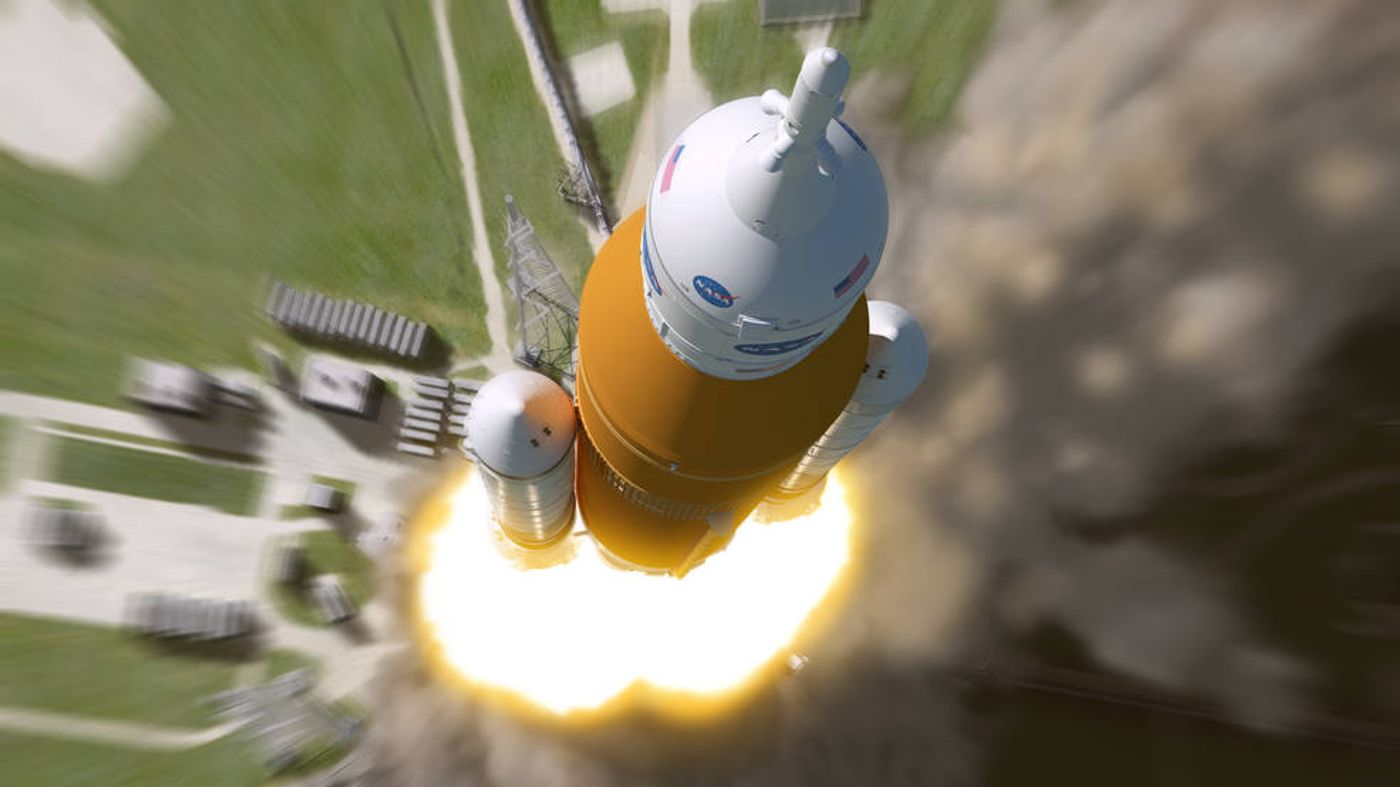First SLS Rocket Launch Will Be Unmanned, NASA Says
NASA’s Space Launch System (SLS) heavy-lifting rocket is being faced with some unkind delays that are frustrating not only the space agency, but also parts of the U.S. government that are pushing NASA to meet specific deadlines on a limited budget.
NASA recently swallowed their pride and announced that the SLS rocket’s maiden voyage would be delayed from the original 2018 date estimate until 2019 due to complications in manufacturing a safe rocket, but now some more bad news has been put on the table.
Image Credit: NASA/MSFC
The announcement, made on May 12th, revealed that NASA will not be launching a crewed SLS rocket on its maiden voyage as had been recently planned, coined Exploration Mission 1 (EM-1). Instead, the first crewed mission is expected as early as 2021, two years after the estimated initial test launch.
The decision comes after a feasibility study that looked into potential problems that could arise. What they found was crewing a rocket that wasn’t meant to be crewed on its maiden voyage in the first place would mean having to send additional equipment that would add more to the cost of launching the rocket.
Instead, SLS will launch with an unscrewed Orion capsule that will circle the Moon for three weeks in order to reduce costs and also to ensure its working safety.
Related: NASA's SLS rocket passes critical design review
With EM-1 being pushed back to 2021, the year during which EM-2 was planned to launch, it means EM-2 will also be pushed back at least 33 months from the EM-1 launch. An estimate for EM-2 has not yet been realized.
The SLS maiden voyage was never really intended to be a crewed mission from the start, as it’s more of a proof of concept for NASA to ensure things are in proper working order. It’s from these results that the space agency can fine-tune their SLS rocket, making it as safe as humanly possible for astronauts.
NASA’s initial test-fire of the SLS rocket booster revealed a number of critical problems that need to be addressed before the rocket is ready to fly. Among those is a core design issue that leads to cracking and other potentially unsafe hazards.
Once fixed, the SLS rocket should be deemed ‘safe to fly,’ but before putting valuable human life on an experimental rocket, it’s always a good idea to do a test flight first to make absolutely sure that no unwanted accidents lead to the loss of life.
While it’s certainly upsetting to see all the problems NASA is going through, third-party commercial space companies like SpaceX are working on their own heavy-lifting rockets. SpaceX is already said to have an anonymous customer paying to go to the Moon and back with their Falcon Heavy rocket next year. Their identities won’t be revealed until afterwards.
Source: Space.com









